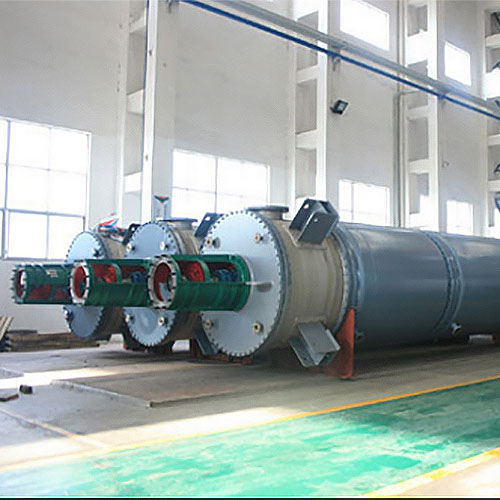
- English
- Español
- Português
- русский
- Français
- 日本語
- Deutsch
- tiếng Việt
- Italiano
- Nederlands
- ภาษาไทย
- Polski
- 한국어
- Svenska
- magyar
- Malay
- বাংলা ভাষার
- Dansk
- Suomi
- हिन्दी
- Pilipino
- Türkçe
- Gaeilge
- العربية
- Indonesia
- Norsk
- تمل
- český
- ελληνικά
- український
- Javanese
- فارسی
- தமிழ்
- తెలుగు
- नेपाली
- Burmese
- български
- ລາວ
- Latine
- Қазақша
- Euskal
- Azərbaycan
- Slovenský jazyk
- Македонски
- Lietuvos
- Eesti Keel
- Română
- Slovenski
- मराठी
- Srpski језик
How does the Industrial Hinge-bladed Wiped Film Evaporator Work?
2025-06-16
The industrial hinge-bladed wiped film evaporator is a special evaporator designed for separating high-viscosity or heat-sensitive materials. Its core features are the vertically designed heating sleeve, the internal rotating hinged scraper system and the vacuum-sealed chamber, which achieve rapid material concentration or solvent removal through mechanical forced film formation and efficient heat transfer.

When the industrial hinge-bladed wiped film evaporator is in operation, the material to be treated is continuously injected from the top of the evaporator. During the process of flowing down along the heated cylinder wall under the action of gravity, each scraper is connected to the rotor through a movable hinge mechanism, and when rotating, it is spread outward by the centrifugal force and slides against the cylinder wall with controllable pressure. This dynamic bonding mechanism evenly spreads the viscous liquid into a continuous film with a thickness of millimeters.
The heat medium in the heating sleeve transfers the heat to the cylinder wall stably. The continuous scraping of the scraper causes violent turbulence in the material film, while exposing the fresh liquid surface to the heated surface. This process greatly enhances the heat transfer efficiency, allowing the material to complete temperature increase and solvent vaporization within seconds. The mechanical action of the rotating scraper also effectively inhibits coking and scaling, ensuring long-term cleanliness of the heat transfer surface.
The hinged scraper structure is the core of the industrial hinge-bladed wiped film evaporator. Compared with the rigid scraper, its flexible contact characteristics can adapt to the slight unevenness of the cylinder wall surface to ensure the uniformity of the liquid film distribution. The continuous shearing action between the scraper edge and the wall surface forces the liquid film interface to be updated, eliminating the heat transfer boundary layer resistance to the maximum extent. The movable hinge design also reduces the impact of mechanical wear on operating stability.



